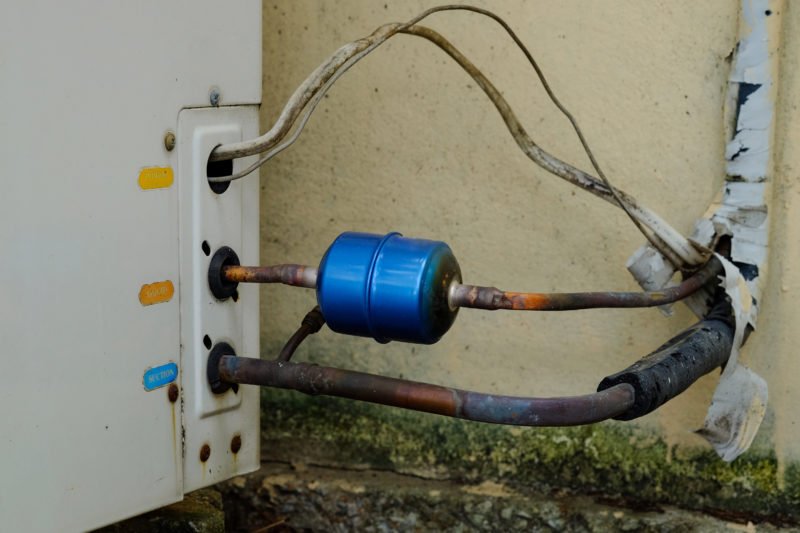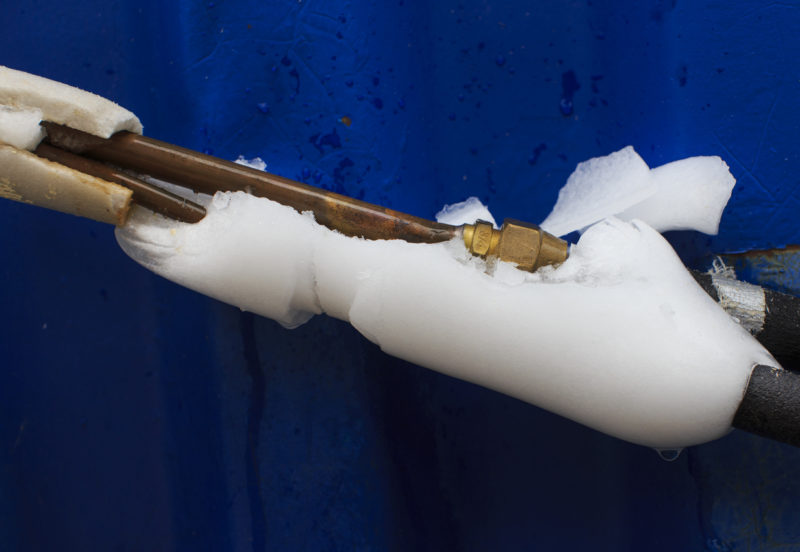My AC Pipe Is Frozen Solid - What Do I Do? Guidance for Resolution
My AC Pipe Is Frozen Solid - What Do I Do? Guidance for Resolution
Blog Article
Are you currently interested in advice on Why Is Ice On My Outside Air Conditione?

Intro
Finding that your AC pipeline is frozen can be worrying, specifically throughout hot summertime when you rely on your air conditioner the most. Understanding what to do in such a situation is essential to stop further damage to your cooling system and guarantee your comfort indoors.
Recognizing the Causes
A number of factors can add to the freezing of an a/c pipe. Comprehending these causes can assist you deal with the problem efficiently.
Absence of Airflow
One typical source of a frozen air conditioner pipeline is inadequate air flow. When the airflow over the evaporator coil is restricted, it can cause the coil to go down below freezing temperature level, causing ice formation on the pipeline.
Low Refrigerant Levels
Inadequate refrigerant levels in your air conditioning system can also lead to a frozen pipeline. Reduced refrigerant degrees can create the pressure in the system to drop, causing the cold of dampness on the evaporator coil.
Cold Weather Conditions
In cooler environments, freezing temperature levels outside can add to the freezing of AC pipelines. If your air conditioning device is not effectively shielded or if there are leakages in the ductwork, cool air can penetrate the system, triggering the pipeline to ice up.
Dirty Air Filters
Unclean or stopped up air filters can limit air flow in your air conditioner system, leading to various issues, including a frozen pipeline. It's essential to change or clean your air filters regularly to make certain correct airflow and avoid ice buildup.
Indications of a Frozen A/c Pipe
Identifying the indications of an icy a/c pipe is vital for timely action.
Reduced Airflow
If you observe a substantial reduction in air movement from your vents, it might suggest an icy pipe.
Ice Buildup on the Pipe
Visible ice build-up on the cooling agent line or the evaporator coil is a clear sign of a frozen a/c pipeline.
Odd Sounds from the Unit
Uncommon audios, such as hissing or gurgling, originating from your air conditioning system can signal that there's ice present on the pipe.
Immediate Actions to Take
When confronted with an icy a/c pipe, it's necessary to act promptly to stop further damage to your air conditioning system.
Turning off the a/c
The very first step is to turn off your air conditioner to stop the system from running and exacerbating the problem.
Checking for Blockages
Examine the location around the interior unit for any type of blockages that may be blocking air movement, such as furniture or drapes.
Defrosting the Pipe
You can use mild methods like placing towels soaked in cozy water around the icy pipeline to assist thaw it slowly.
Safety nets
Taking safety nets can assist stay clear of future events of a frozen AC pipeline.
Regular Maintenance Checks
Arrange routine maintenance get in touch with an expert HVAC professional to make sure that your air conditioner system is running efficiently.
Altering Air Filters
Routinely replace or cleanse your air filters to prevent air flow limitations and preserve optimal performance.
Protecting Exposed Pipes
If your air conditioner pipes are exposed to cold temperatures, take into consideration shielding them to stop freezing throughout winter months.
Seeking Professional Help
If DIY approaches fail to resolve the issue or if you're unclear concerning exactly how to continue, it's finest to seek support from a qualified HVAC professional.
When DIY Methods Fail
If your attempts to thaw the pipeline or address various other concerns are not successful, it's time to hire an expert.
Value of Hiring a Professional HVAC Technician
A certified HVAC service technician has the expertise and devices needed to detect and fix concerns with your air conditioning system safely and successfully.
Conclusion
Dealing with a frozen a/c pipe can be a discouraging experience, however knowing how to respond can aid lessen damages and restore comfort to your home. By comprehending the causes, acknowledging the signs, and taking punctual activity, you can efficiently resolve the issue and protect against future occurrences.
G UP? HOW TO FIX IT?
It happens all over America. And the rest of the world probably. It’s the hottest day ever and for some darn reason your AC isn’t cooling the house. You fiddle with the thermostat to try and fix the problem. Nada. All you can do now is go outside and check the AC unit. You make your way there and find your air conditioner unit is frozen! But how?
In this post we’ll cover how you can tell that your air conditioner has frozen (other than the obvious reasons), what could have caused the freeze, and some of the things you can do about your AC freezing up. And if you have a frozen heat pump condenser, read our blog about it to learn what to do! But remember, it is always best to avoid your AC freezing up with an AC tune up. And if you are moving into a home, it's critical to get HVAC inspection so that you are aware of an AC problems before you move in.
Keep reading and you may be able to fix the frozen AC yourself. If you can’t, call an HVAC specialist. If you live in Maryland, call SuperTech HVAC for AC repair. We’ll take care of it.
How Does An Air Conditioning Unit Work?
How you probably imagine an AC works is wrong. Contrary to popular belief, an AC system does not inject cool air into a building. Instead, it removes the heat from inside and transfers it outside. Cool huh? (Pun intended).There are 4 major components among the 3 stations of an air conditioning system: the evaporator coil, the compressor, the condenser, and the refrigerant – a special chemical that links everything together through a closed loop system.
Station 1:
Warm indoor air is sucked into the return vent, through a filter, and blows over the evaporator coil. The heat is absorbed into the cold refrigerant, turning it from liquid to gas. The air, which is now cool, is blown back into the home to areas that your thermostat, i.e. you, has decided.
Station 2:
The refrigerant makes its way outside the house to the compressor, which squeezes the warm refrigerant, raising its gaseous temperature even more.
Station 3:
When the super hot vapor refrigerant reaches the condenser, the last step, the heat is expelled and absorbed into the outdoor air. The refrigerant instantly cools, which changes it from gas back to liquid form. The cold liquid refrigerant is now ready to return to station 1 and repeat the process.
Is Your AC Freezing Up? Here Are The Signs:
As you may have guessed, your air conditioner unit freezing up on a hot day is not normal.
If this happens, there's no need to panic. Often the issue can be solved with a little troubleshooting. If the AC unit is left frozen for too long however, you may find yourself with a bigger problem.
First things first, how do you know your AC is frozen?
Well, the obvious sign is the ice on your refrigerant line-set pipe. Simply check between your outdoor AC unit and your home's exterior wall to see whether your AC line frozen.
You might also have a frozen evaporator coil. This one's not as easy to check. You'll need to open a panel on the indoor unit to inspect. Don't do this unless you're handy. If you aren't, call an HVAC pro like SuperTech HVAC or you may damage something in the process.

I recently found that article about How can I fix an air conditioner’s frozen pipe? when scouting around the web. You should take the opportunity to share this blog if you enjoyed reading it. I truly appreciate reading our article about Air Conditioner Frozen? How To Fix your Frozen AC Line.
Recurring Service Plans Report this page